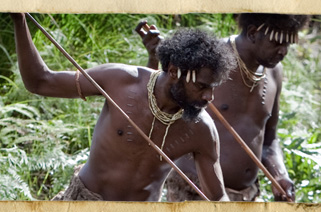First Nations peoples have occupied this land since time immemorial. It is the longest continuous culture on Earth. So far the evidence has dated occupation of Australia’s First Nations peoples to be at least 65,000 years.
An important distinction when referring to this type of time-based language so commonly used when talking about the past is to acknowledge that linear time is just one way of remembering our history. For First Nations peoples there is a widespread experience that time and ancestral connection is circular and flexible, not linear and fixed.
First Nations peoples celebrate our diverse languages, artforms, kinships, and sophisticated technologies. We acknowledge our nations have been under the care and custodianship of culture leaders, Elders and communities for many generations. We respect First Nations ways of being, knowing and doing. We know this happens in the past, present and the future.
As examples of our longest, continuous culture on Earth consider these stories:
40,000-year-old petroglyph rock carvings at Murujuga are the densest concentration of rock art in the world. Over one million petroglyphs are preserved and protected by the Ngarluma, Mardudhunera, Yaburara, Yindjibarndi, and Wong-Goo-Tt-Oo peoples.
30,000-year-old Wailwan grindstone fragment demonstrates the use of technology in food preparation and reinforces oral histories of First Nations peoples as the world’s first bread makers. Starch residue on the stone tells us a story of meals made thousands of years ago using grains to sustain our energy.
20,000-year-old footprints made by Barkandji/Paakantji, Ngiyampaa, Mutthi Mutthi ancestors were documented and dated in 2003. The fossil tracks from groups of adults and children were preserved by sand. These imprints from our First Peoples remain the world’s largest set of Ice Age footprints.





